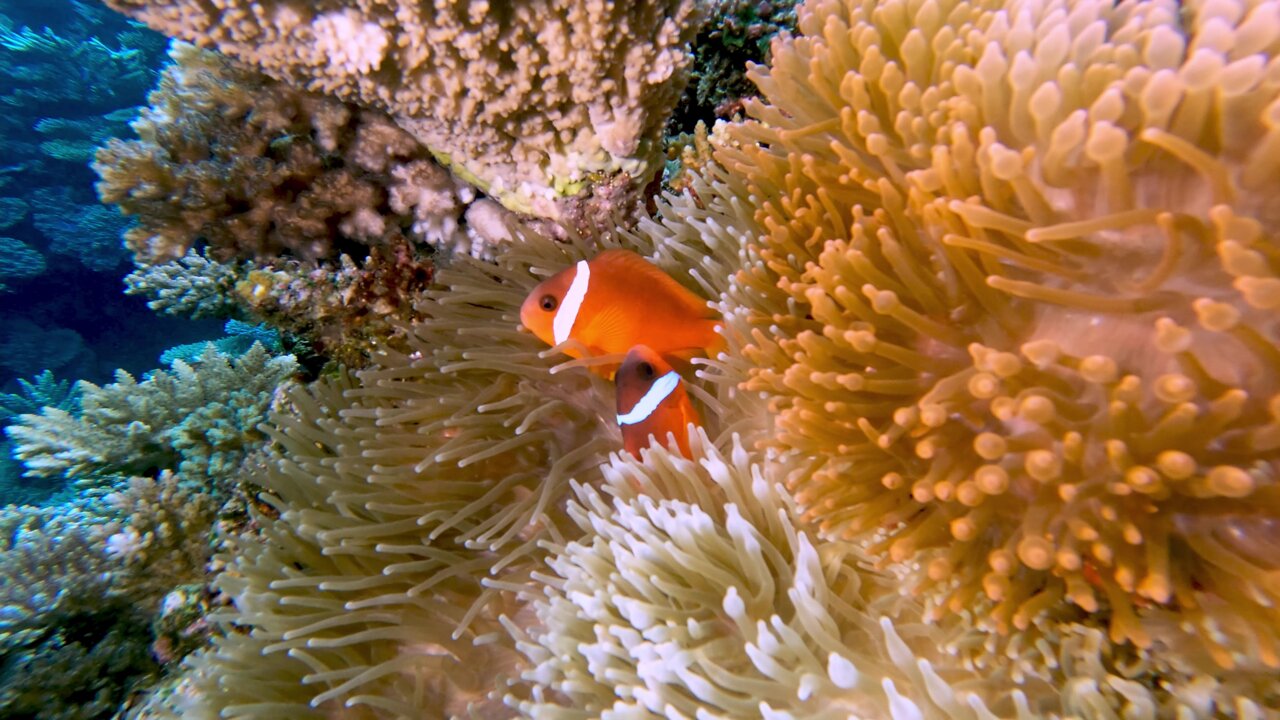Premium Only Content

Fiji anemone fish are immune to paralytic sting of their predator hosts
Sea anemones are predatory animals that anchor to the coral and sway in the ocean current as they search for food. Their tentacles resemble the long leaves of a plant as they grasp at fish and small animals that serve as food for the sea anemone. The tentacles contain stinging cells that are equipped with an external sensory hair. When triggered, the cells fire a harpoon-like barb and inject a toxin. This can be used as defense or for hunting. Small fish and other marine animals become paralyzed and are then devoured by the sea anemone.
But there are fish that are immune to the sting of the sea anemone. Clown fish are a well known exception, with their mucous that prevents the activation of the sea anemone's stingers. Clown fish are not the only fish with the ability to produce this mucous. There are many species that are referred to as anemone fish. These two are the Fiji anemone fish. They live among the deadly anemones, taking cover at the slightest sign of a threat. Predators don't dare follow the anemone fish into the tentacles and the small fish are safe within.
These fish continuously rub up against the tentacles, even when predators are not near. The contact with the anemone helps them accumulate mucous which combines with their own mucous to produce the substance that masks their presence from the stinging cells.
The anemone benefits from the fish in a perfect example of a symbiotic relationship. The anemone fish becomes aggressive and chases other fish away that might nibble at the tentacles of the anemone. The fish excrement provides the anemone with nutrients. The entire arrangement is a win-win situation for both animals.
Anemone fish are loyal to an anemone, remaining in the same location and protecting their host. Often found in groups, there will be one breeding male and one breeding female. If the female dies, the male will turn into a female and the largest non-breeding male will assume the role of being the male breeder.
Anemone fish feed primarily on zooplankton that drift past on the ocean currents. As expected, these fish were found on the reef surrounding an island in the Republic of Fiji.
-
 1:57
1:57
WildCreatures
2 months ago $7.47 earnedCurious wild deer comes to share a snack with man in forest
48.7K15 -
 LIVE
LIVE
MattMorseTV
4 hours ago $8.96 earned🔴Sunday Gaming🔴
1,004 watching -
 LIVE
LIVE
Joker Effect
56 minutes agoINTERVIEWING Rumble Gaming community members: Viewbotting and how they see the current landscape.
445 watching -
 1:45:53
1:45:53
Nerdrotic
4 hours ago $9.04 earnedUnravelling the Secrets of Skinwalker Ranch | Forbidden Frontier #115
55.8K4 -
 41:56
41:56
Athlete & Artist Show
4 hours ago $0.27 earnedAustin Ekeler: Going From "0 Star Recruit" To Leading The NFL In TD's, New Fan App | FROM THE VAULT
7.53K1 -
 2:46:49
2:46:49
Barry Cunningham
9 hours agoNOW THEY FEAR US! | RFKJR STRIKES BACK | JD VANCE ON PRESIDENT TRUMP | AND MORE NEWS!
51.6K28 -
 LIVE
LIVE
Spartan
4 hours agoCharlotte Qualifier watch party + Ranked and Expedition 33
116 watching -
 6:09:54
6:09:54
bigbossrobinson
7 hours agoLIVE - DOUBLE IMPACT - RESIDENT EVIL 4 & METAL GEAR SOLID Δ: SNAKE EATER
21.8K -
 8:18
8:18
MattMorseTV
6 hours ago $5.81 earned2.2 MILLION in ONE YEAR.
35.1K121 -
 14:37
14:37
Colion Noir
9 hours agoCanadian Police Chief Urges Citizens To Comply With Home Invaders And Hide
72K88